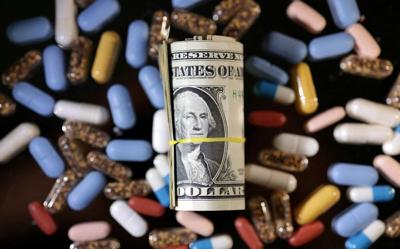President Donald Trump has intensified his administration’s efforts to significantly reduce prescription drug prices across the United States, targeting major pharmaceutical companies with a stern directive to align their pricing with international standards. This aggressive stance underscores a pivotal moment in the ongoing debate surrounding healthcare affordability and the economic impact of drug costs on American consumers.
The White House confirmed that President Trump dispatched letters to the chief executives of 17 prominent pharmaceutical firms, explicitly outlining expectations for substantial price reductions. This move follows a sweeping executive order signed in May, which mandated that drug manufacturers adjust their U.S. pricing to mirror the lower rates observed in other global markets, particularly those within the Organisation for Economic Co-operation and Development (OECD) member countries.
Under the proposed policy, companies are urged to ensure that the United States receives prices comparable to, or better than, those offered to other developed nations. Furthermore, the administration expressed its readiness to facilitate direct sales from manufacturers to patients, circumventing traditional middlemen, provided these transactions adhere to the “most-favored-nation” pricing principle, ensuring the lowest possible cost.
In his communication, President Trump issued a clear warning: non-compliance would trigger governmental countermeasures. He asserted that if pharmaceutical entities failed to cooperate, the administration would deploy “every tool in our arsenal,” including potential rulemaking or pursuing alternative strategies such as importing more affordable medicines from abroad, to safeguard American citizens from perceived abusive drug pricing practices.
Despite the administration’s assertive posture, industry analysts and drug pricing experts have expressed considerable skepticism regarding the likelihood of pharmaceutical companies fully acceding to Trump’s demands. Many believe that drugmakers will resist such widespread price reductions, citing complex global pricing structures and existing market dynamics as significant hurdles.
The United States currently bears the highest burden of prescription drug costs globally, with patients often paying nearly triple the prices found in other advanced economies. This stark disparity has fueled public outcry and remains a central point of contention in the broader healthcare policy discussions, highlighting the urgent need for reform in drug pricing mechanisms.
Conversely, pharmaceutical companies contend that drastic price cuts could severely impede innovation. They argue that the substantial investments required for research and development, which lead to life-saving medicines, are directly linked to current revenue streams. Imposing significantly lower prices, they claim, could stifle future breakthroughs and reduce the incentive for pharmaceutical industry advancement.
As this high-stakes standoff unfolds, the implications for the American healthcare landscape and the pharmaceutical sector are profound. The outcome of these negotiations will not only determine the future of prescription drug affordability for millions of Americans but also set a precedent for governmental intervention in private sector pricing, potentially reshaping the economic dynamics of the global healthcare market.






Leave a Reply